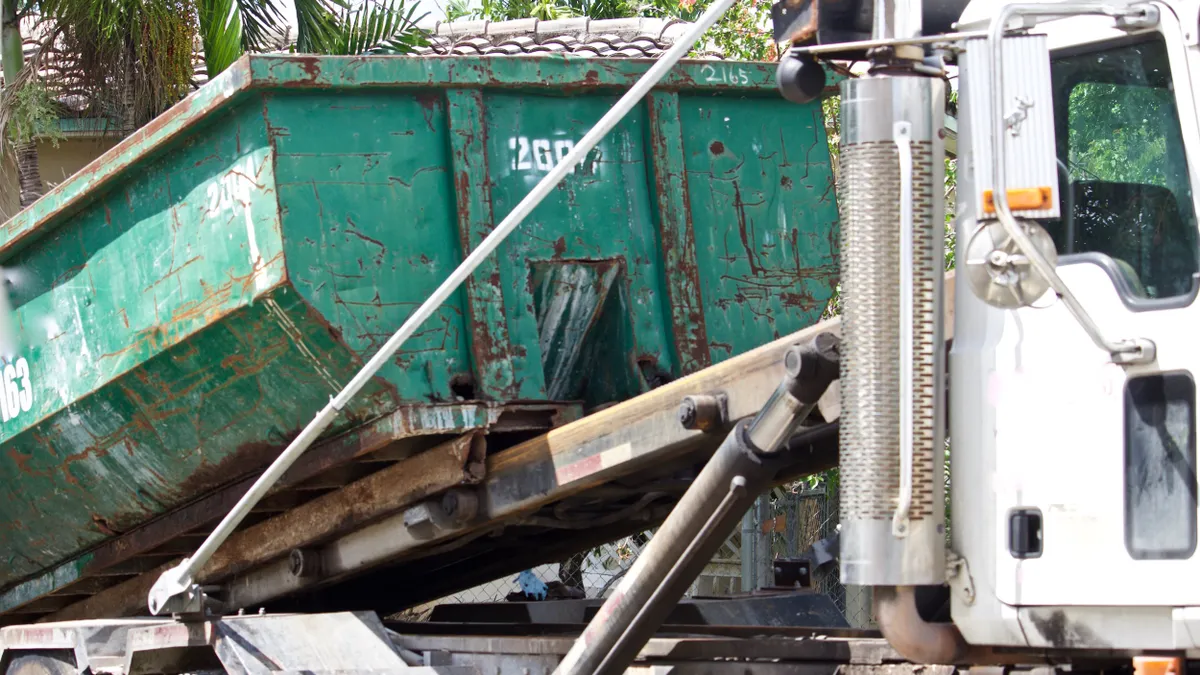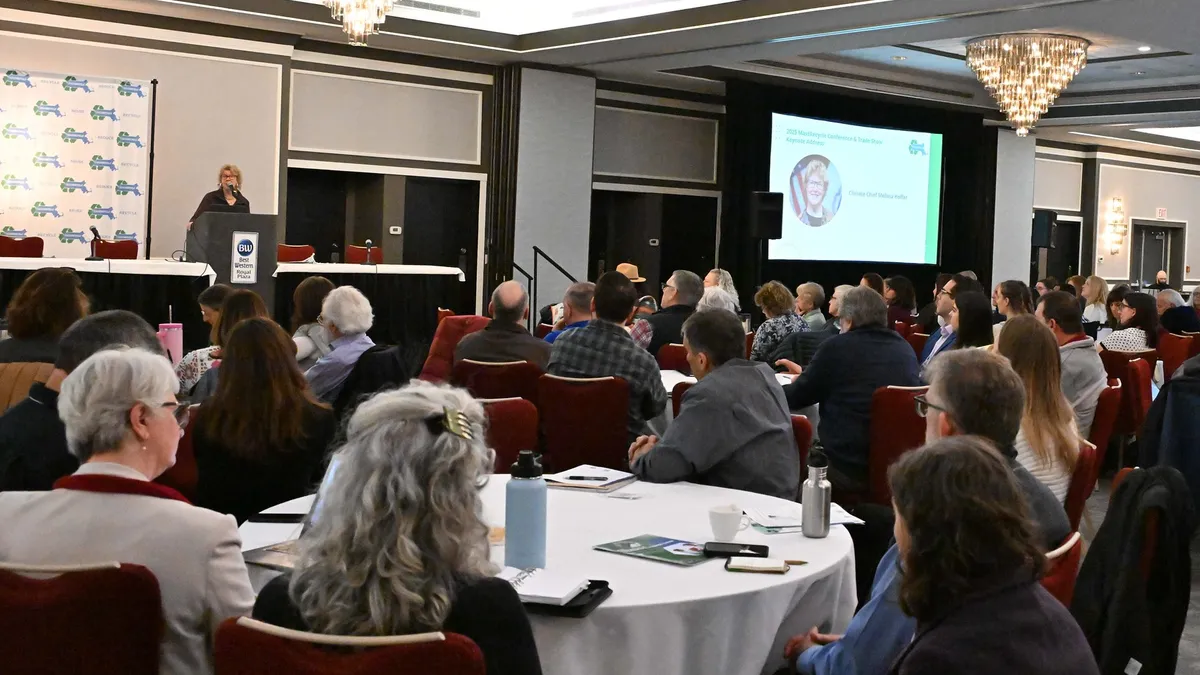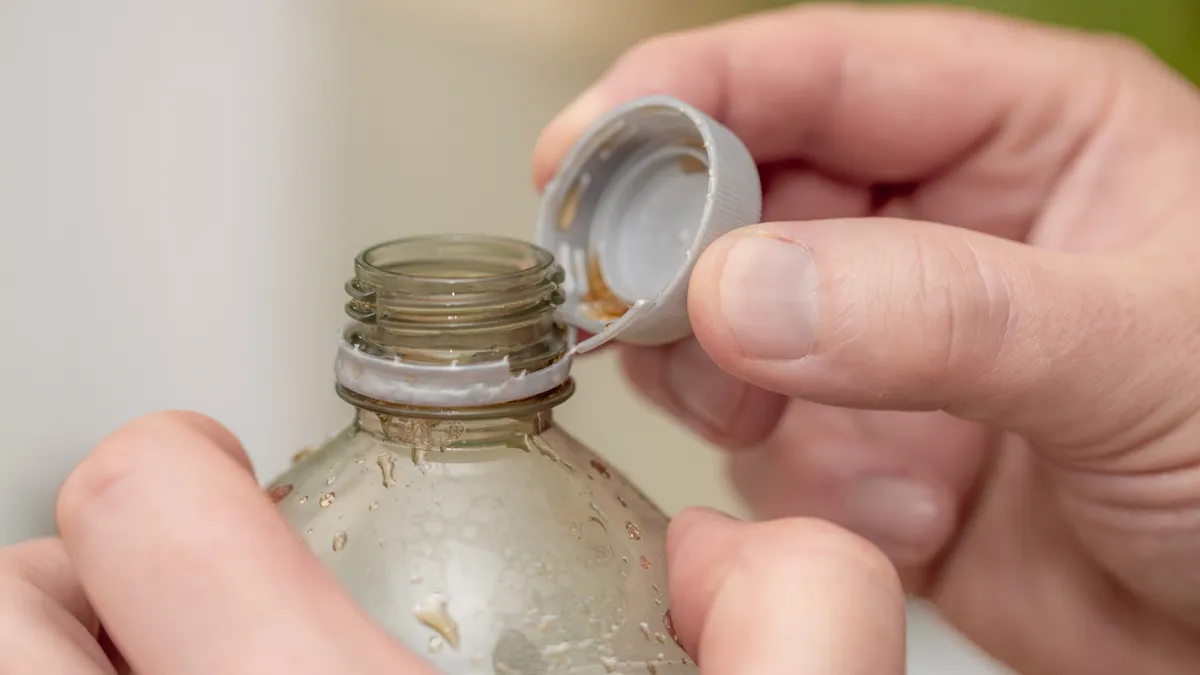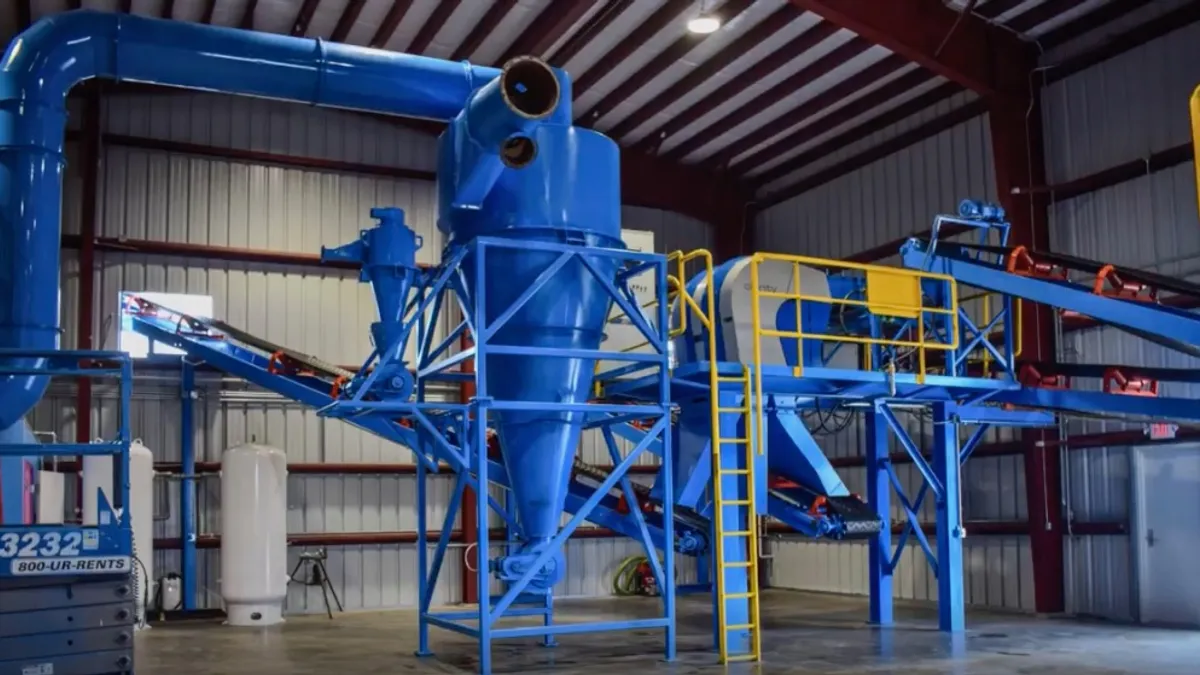The coming year will bring a multitude of challenges to the waste industry — changing regulations from the Environmental Protection Agency, tightening import restrictions from China, and an evolving debate over the nature of "zero waste," to name a few.
The industry will also have to deal with the growing magnitude of e-waste. In addition to volume, the type of e-waste is changing each year, too. Every time a new technology manifests, the e-waste industry must adapt techniques and tools so that the new material can be processed for scrap or refurbishment and reselling.
Waste Dive spoke with Steven Kaufman, CEO of Florida-based Urban Mining, about the evolving e-waste business to better understand what trends to anticipate in 2018.
WASTE DIVE: What sort of developments in e-waste management does the industry need to see in the near future?
STEVEN KAUFMAN: Innovation is a need to manage data destruction for changing technologies. Specifically, we’ve got the proliferation of solid-state hard drives. The penetration today is very low, but over the next two to three years, we’re going to see significantly higher usage or penetration of solid-state hard drives and equipment. Most of the equipment that’s used today to shred hard drives isn't sufficient for solid-state hard drives.
And do you see Urban Mining as being a leading innovator in that space?
KAUFMAN: I guess that’s maybe a little bit less about innovating as much as just being kind of the tip of the spear in making sure that the way that we’re managing end-of-life electronics is appropriate for ever-changing technology.
What's kind of neat for us is we've got a crystal ball. And that crystal ball is that whatever technology is being sold today is going to be what we're bringing in our doors three to five years from now. We need to not be looking at our feet, we need to be looking ahead. But that means that we need to be planning and preparing to manage what's coming out of our clients' business, and we know exactly what that's going to be.
So a little more broadly, what trends or challenges do you see for e-waste processing in 2018?
KAUFMAN: I think we see a couple of things happening. Certainly, you’ve got the proliferation of smartphones and the internet of all things. Meaning that everything is becoming connected to each other, so that means that data security issues become even greater. Both on a personal basis, but a business basis as well. It means that from a data security standpoint, everybody needs to be much more diligent in how they're handling end-of-life equipment and who is handling it for them.
And if you look at the statistics from the electronics industry about sales and expected sales, laptops, desktops are going to continue to drive the market, certainly on the commercial side, with the biggest change being the growing prevalence of solid-state hard drives versus traditional hard drives.
Looking into the near term future, just a few years, what sort of job growth or potential market growth do you see for the e-waste industry?
KAUFMAN: As there's greater pressure on regulation and on certification, we're going to see some real consolidation. I think we're going to see the smaller guys go away, but we’re going to see the opportunity for real growth for companies like mine. And not that it's all about me — my ego is fairly large, so I don't think there's anybody out there who does it as well as us — but there are companies that approach the market the right way, and I think there's going to be wonderful opportunities for them to grow. And hopefully, they’ll grow efficiently, but that will mean continued job growth, and if it's companies that operate to a higher standard, it's job growth that means better wages and better training.
Is that growth going to slow down any time soon?
KAUFMAN: Companies are starting to wake up and pay more attention to the importance and the value of – what I guess in our industry we call ITAD [IT asset disposition], versus scrap. And it was surprising to me that people were only just talking about it. But it's basically that there’s a lot more value if you can refurbish something and sell it versus treating it like scrap.
Now, in order to refurbish and resell it is going to require more labor. Instead of throwing it all in a shredder and then having it — having a shredder and a bunch of automated equipment that then sorts it and separates it, now I've got to have some technicians doing it. But the economics of the ITAD approach are significantly more compelling. You're also going to end up needing to hire a lot more people. As we're talking about it, that's part of what fueled our job growth. Ninety percent of what we do is ITAD. A very small percent of it is scrap. But the margins are significantly better.
How do you see the e-waste sector interacting with what might be seen as the more 'traditional' sectors of the waste industry, like those who collect and haul trash?
KAUFMAN: It's a tough challenge, because we're not in the — you know, we're not really in the collection business. It's an entirely separate business. And the challenges that the collection guys — they work well if what they're getting is just going to be scrap, but if you're focusing on the ITAD business, then it creates much more of a challenge. Because you don't want to just collect stuff and dump it into a bin. I guess if we have to look toward next year, it's one of the challenges that we really need to figure out. How do we work together?



















